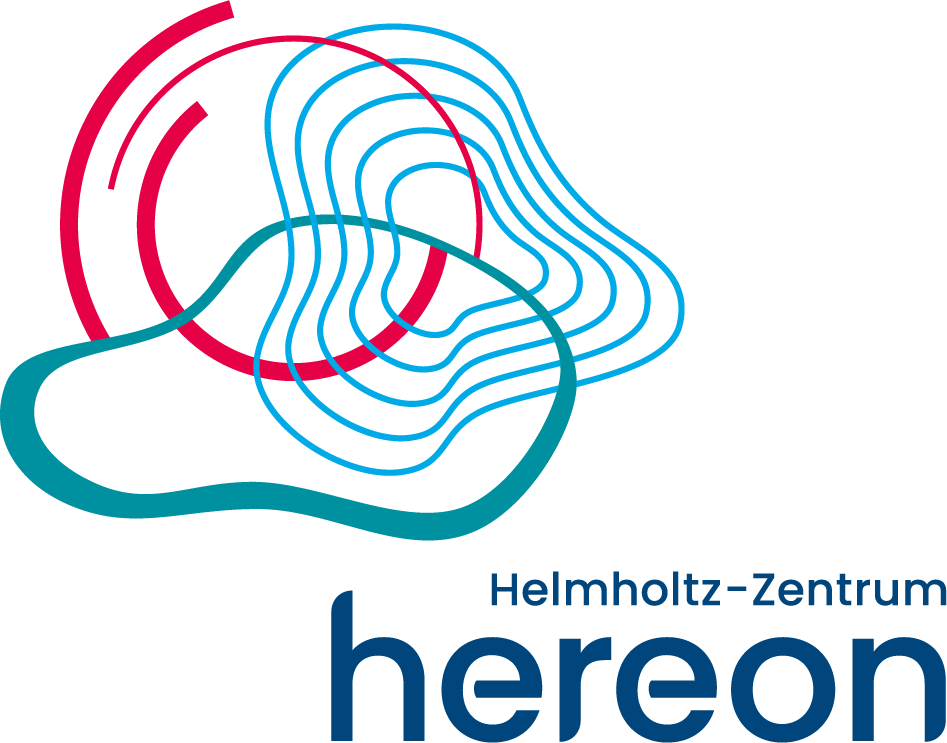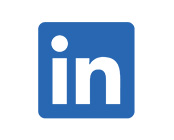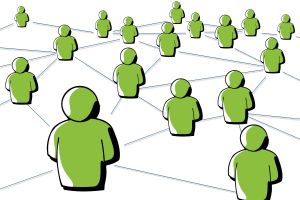MLZ ist eine Kooperation aus:
 > Technische Universität München
> Technische Universität München > Helmholtz-Zentrum Hereon
> Helmholtz-Zentrum Hereon
 > Forschungszentrum Jülich
> Forschungszentrum Jülich
MLZ ist Mitglied in:
 > LENS
> LENS > ERF-AISBL
> ERF-AISBL
MLZ in den sozialen Medien:

MLZ
Lichtenbergstr.1
85748 Garching
Newsletter I/2025
Jump directly to the chapters! (and don't forget to enlarge the pictures by clicking them!)
» Instruments» Events» People» UsersInstruments
» Next steps at ERWIN» J-NSE PHOENIX’s new best buddy
» Finally reaching the East
» News from TRISP
Next steps at ERWIN
Work on the new thermal powder diffractometer ERWIN in the Experimental Hall is ongoing. The optical bench, sample stage and detector bench components were
completed. In the picture gallery below, you can follow the progress of
the detector bench in particular.
Markus Hölzel (MLZ)
Just click a picture in the gallery – with the arrows in the upper right, you can navigate!
J-NSE PHOENIX’s new best buddy
Attentive readers of the last newsletter will have recognised the new employee at the J-NSE “PHOENIX”: the robot FLASH (a MRS90 TX2-90XL from Stäubli) is the new little helper at the neutron spin echo spectrometer.
Discreet, unobtrusive and attentive like a butler in a palace, FLASH helps to change samples in different sample environments and adjusts the sample aperture of the instrument. It knows how delicate magnetic field variations are for the neutron spin in an NSE experiment, and therefore only moves to the sample area with its driving unit when assistance is required. It then returns to its resting place until the next mission. All magnetic parts, such as motors, which could influence the magnetic field near the neutron beam path, are kept far away during data acquisition.
Olaf Holderer (JCNS@MLZ)
Finally reaching the East
Work is ongoing to connect the Neutron Guide Hall East to the reactor by the neutron guides of beam tube SR5. The first was NL-SR5a for the high-intensity time-of-flight diffractometer POWTEX. Another two will feed TOPAS and TRISP.
The picture on the right shows the blue radiological shielding at beamtube SR5 in the Experimental Hall. It is partly in place, and you can already see POWTEX’s neutron guide.
Take a look at how this was done and follow the route taken by that neutron guide from the Experimental Hall via the Intermediate Building to the new Neutron Guide Hall East in the galleries below. Remember: you can navigate using the arrows in the top right corner!
How to walk through the walls
Peter Link (MLZ)
Light at the end of the neutron guide!
Peter Harbott (Forschungszentrum Jülich GmbH)
News from TRISP
TRISP is a construction site undergoing significant changes. Progress is encouraging, and we expect to be operational by autumn. All components are complete and ready for installation. The monochromator shielding is being installed on the new dance floor.
The Neutron Optics Group is currently aligning the new thirty-metre-long elliptical-parabolic neutron guide. The main challenge was to transport and polarise the thermal neutron spectrum efficiently over this relatively long distance of thirty metres. This has been solved by incorporating a polarising cavity in the centre of the ballistic neutron guide design.
We expect a 20% flux gain in the wavelength band from 1 to 4 Angstroms compared to TRISP’s previous location, with good polarisation efficiency across the entire band. During installation, we will upgrade the spin flippers of the spin echo units to enable operation at higher frequencies and double the energy resolution.
Thomas Keller (MPI@MLZ)
Events
» MLZ Conference 2025: Neutrons powering the future of fusion and nuclear technology» The annual DGM-SF2M Texture and Anisotropy symposium at MLZ
» Workshop on Machine-Learning Basics
» Training course on a CMWP-fit program
MLZ Conference 2025: Neutrons powering the future of fusion and nuclear technology
From July 28th to 31st, 2025, the MLZ Conference “Neutrons for Fusion and Nuclear Applications” brought together almost 60 international researchers and industry experts for four days of in-depth discussions, scientific presentations, and collaborative vision at Schloss Fürstenried in Munich. The event highlighted the critical role of neutrons and positrons in developing advanced materials designed to withstand the extreme conditions of fusion reactors and also emphasised the critical need for a tritium supply chain.
Keynote insights: From breeding blankets to big questions
The conference featured five keynote presentations from leading minds in the field.
Rudolf Neu, Chair of Plasma Component Interaction at the Max Planck Institute for Plasma Physics, made clear that engineering robust first-wall and divertor materials is pivotal to any fusion power plant concept.
Gianfranco Federici, Programme Manager at EUROfusion, sparked one of the liveliest discussions of the conference on “Testing Needs for the Development and Qualification of Fusion Breeding Blankets.”
Christian Linsmeier, Director of Plasma Physics (IFN-1) at Forschungszentrum Jülich, laid out the challenges of radiation damage, microstructural changes, and how neutrons impact the longevity of critical components.
Michael Smith from the University of Manchester explored the challenges of validating multi-scale simulations that predict the structural performance of reactor components.
Tom Wallace-Smith, Co-Founder and CTO of Astral Systems, closed the keynote sessions with an industry-forward outlook on “Development of a Scalable Platform for Fusion Neutron Irradiation and Next Generation Nuclear Applications.”
At the centre of discussions
The 29 talks and the poster session ranged from simulation-driven design of fusion materials to experimental studies on fast neutron-induced transmutation. A clear theme emerged across all talks: how to extend the limits of materials performance, reactor safety, tritium supply, and energy efficiency, all while staying realistic about timelines for fusion industrialisation. And the synergy of the FRM II and fusion topics was also one of the more broadly discussed topics.
Victoria Bingham (MLZ)
The annual DGM-SF2M Texture and Anisotropy symposium at MLZ
The DGM-SF2M Texture Symposium was organised by STRESS-SPEC and the Materials Science Group at MLZ. This event was held as a joint meeting of the texture working groups of the German Materials Society (DGM) and the French Society of Metallurgy and Materials (SF2M), continuing a long-standing collaboration between the two organisations.
- Methodological developments using x-rays, neutrons, and electrons
- Texture and microstructure of high entropy materials
- Texture and microstructure of additively manufactured components
- Fundamentals and simulation of texture
- Texture-related topics
Nine interesting presentations were given, and as always, there was a lively discussion among the 21 participants from Germany, France, and Belgium. In addition, a guided tour of the FRM II Research Neutron Source was organised, and the evening before, a social gathering took place at the restaurant “Gasthof Neuwirt” in Garching.
The next meeting in spring 2026 will be hosted by Leo Kestens (Ghent University).
Weimin Gan (GEMS@MLZ)
Workshop on Machine-Learning Basics
On May21st and 22nd, a two-day machine-learning basics workshop, jointly organised by the Data Evaluation Group & the Data Driven Discovery Group, took place at the MLZ campus in Garching.
Participants, who were an interesting mix of PhD students, Post-docs, instrument scientists and software developers, gained insights into the fundamental principles of model selection, learnt about the various types of neural networks and large language models from our in-house Artificial Intelligence experts.
Although the number of attendees was larger than usual due to the popularity of the topic, the workshop was very interactive with many opportunities for discussion and networking.
The participants applied the theoretical knowledge from the morning sessions to exercises in the afternoon sessions, which were distributed amongst several smaller groups with dedicated tutors. This helped them obtain practical experience in selecting appropriate models for the given dataset and evaluating their performances.
Neelima Paul (MLZ)
Training course on a CMWP-fit program
As invited by the Materials Science Group, a specialised training course on Convolutional Multiple Whole Profile (CMWP) fit was conducted under the guidance of Tamás Ungár from Eötvös University Budapest (Hungary), one of the original developers of the CMWP fitting method. This method is widely used in materials science to extract microstructural parameters, such as dislocation density, stacking faults, crystallite size, and strain from X-ray and neutron diffraction line profiles.
A thorough understanding of the theoretical background of the CMWP method and hands-on training in using the CMWP-fit software for analysing experimental diffraction profiles was provided by the lecturer. Future cooperation topics have also been discussed. The participants came from MLZ Groups of Material Science, Structure, Advanced Materials, and Data Evaluation, and as well their close cooperation partners.Weimin Gan (GEMS@MLZ)
People
» Newly arrived» Heinrich Büssing Prize 2024 for MLZ scientist
Newly arrived
Avanish Bharati
I am the new second instrument scientist at the KWS-X X-ray beamline and KWS-3 VSANS diffractometer operated by JCNS.
My background is in Soft Matter with a master’s at IISc in India and Ph.D. from KU Leuven in Belgium, both with a Summa cum laude. During my postdoc at NIST Center for Neutron Research in US, I developed multi-method measurements: https://doi.org/10.1016/j.cocis.2019.07.001.
Following a GNeuS postdoc on Li-batteries with Stephan Förster (Forschungszentrum Jülich GmbH), I am excited to forge collaborations with users, with a focus on in-house operando-scattering-spectroscopy methods.
Lucas Kreuzer
Hi! I am Lucas, the new second instrument scientist at the resonance spin echo spectrometer RESEDA. My expertise is in soft matter, with a focus on polymer films and understanding how their nano-morphology and dynamics influence macroscopic properties.
I am excited to contribute to making RESEDA a user-oriented, reliable, and versatile instrument. If you are interested in probing slow dynamics in your system – or just want to talk neutrons and polymers – don’t hesitate to reach out. Looking forward to working with many of you!
Heinrich Büssing Prize 2024 for MLZ scientist
Leonie Heinze, instrument scientist on the polarised neutron diffractometer POLI at MLZ, has been awarded the 2024 Heinrich Büssing Prize for her dissertation “Competing magnetic phases of frustrated quantum magnets“ (2023). The prize is awarded every year by the Braunschweigische Hochschulbund in recognition of outstanding doctoral research carried out at the Technische Universität Braunschweig, where Leonie worked in the group of Stefan Süllow.
In her thesis, Leonie studied minerals serving as material realisations of frustrated quantum magnets, in a sense, “confused” quantum spin systems where the exchange interactions compete and where conventional magnetic order is suppressed. For her investigations, she used thermodynamic measurements as well as neutron scattering techniques. “I have grown fond of frustrated magnetism and over the past years”, says Leonie, “and I feel very much honoured being awarded the Heinrich Büssing Prize.”
The award ceremony will be held in Braunschweig in October.
Find Leonie’s thesis here: https://doi.org/10.24355/dbbs.084-202312111318-0 and the TU Braunschweig’s press release here!
Users
» A short trip to Regensburg» Neutron scatterers in the North
» Remarks of the MLZ User Committee
A short trip to Regensburg
Between March 16th and 21st, 2025, Regensburg University hosted the biggest European physics congress: The DPG Spring Meeting of the Condensed Matter Section. With more than 5,000 scientists and around 4,000 contributions, the event provided valuable insights into the field. As usual, the MLZ User Office was present with a stand in the Economy Building.
However, it was rather quiet this time due to a lack of through traffic. Most of the lectures had been moved to other buildings this year. But this situation had a positive side, too: it gave more time and space for deeper conversations with interested students and PhDs who were strolling around during breaks!
Neutron scatterers in the North
2025 was again the time for an International Conference on Neutron Scattering, and according to rotation, it was held in Europe again. Copenhagen/ Denmark and Lund/ Sweden became the joint hosts and created a friendly and welcoming atmosphere for 785 registered participants from all around the world. A total of ten thrilling keynotes started each of the four conference days and presented the breadth of neutron scattering. Their topics ranged from revealing the invisible in cultural heritage objects by Joseph Bevitt (ANSTO) to the role of neutrons in modern physics by Chen-Yu Lu (University of Illinois), from measuring quantum spin entanglement by Allen Scheie (LANL) to techniques for additive manufacturing characterísation by Florencia Malamund (PSI), and so much more.
MLZ was Platinum Sponsor as usual, and our booth was quite an attraction. Just follow us during the conference days in the gallery – and also learn which MLZ colleague received one of the poster prizes!
Remarks of the MLZ User Committee
I hope you all had a nice and relaxing summer. Some of us met during the ICNS2025 in Copenhagen/Lund, July 6th-10th. It was a very successful event with over 700 neutron friends coming together and discussing science and new technologies in a very friendly and collegial way. MLZ was very well represented there, and every time I passed the MLZ booth, it was crowded. I would also say that this was a very important event for keeping the interest in the neutron facilities and the potential they offer for contributing to a more sustainable society. One highlight of the conference was the last day in Lund, where we got the on-site experience of ESS. We got the opportunity to walk around in the instrument halls freely and talk to the scientist responsible for building the instruments. Personally, I’ve been involved in ESS in various forms since it was the site of a farm and have been visiting many times since then. However, this visit was so far the best and left the impression that this is now for real and very soon the first experiments can be performed. Very much needed for the European Neutron Facility Landscape, this will certainly boost the activities and interest for existing neutron facilities like MLZ.
Coping with the situation at MLZ
From the MLZ management, we got promising reports that the reactor operation will start in 2026. Some of the very critical challenges for the replacement of the new central channel have finally been solved thanks to the systematic and thorough approach that has been taken. This has been a very challenging time for the MLZ crew on levels, but I’m impressed by how well they have been coping. The good side of this from a user perspective is that the support labs and other activities have been very much extended in terms of equipment and expertise, also in modelling. All this has happened thanks to the devotion and expertise of the MLZ technicians, scientists and management – and of course, the User Office with Ina in charge.
Meet the User Committee in person!
I would particularly like to mention the new activities in Food Structure, where the Neutrons and Food 8 conference will be organised in Garching June 15th-19th, 2026. Theresia Heiden-Hecht has been the driving force, and I hope you will join me at the conference. Challenges with respect to food production, health and well-being require a truly interdisciplinary approach with a wider skillset than traditionally applied.
As User Committee we hope to see you all at the MLZ User Meeting Dec 3rd-4th, preceded by a QENS-workshop!
On behalf of the MLZ User Committee.
Tommy Nylander
Welcome to the MLZ Newsletter!
The MLZ Newsletter is sent directly to your inbox. All our users are invited to subscribe to it via GhOST!
You aren’t a scientific user but interested? Then just send an email to the MLZ User Office!
Upcoming deadlines
- smartvillage Bogenhausen, Dec 03rd-04th, 2025
- Abstracts: Sept 25th, 2025
- Registration: Oct 24th, 2025
- Archäologische Staatssammlung München, May 19th-22nd, 2026
- Abstracts: Feb 15th, 2026
- Registration: April 30th, 2026
MLZ ist eine Kooperation aus:
 > Technische Universität München
> Technische Universität München > Helmholtz-Zentrum Hereon
> Helmholtz-Zentrum Hereon
 > Forschungszentrum Jülich
> Forschungszentrum Jülich
MLZ ist Mitglied in:
 > LENS
> LENS > ERF-AISBL
> ERF-AISBL
MLZ in den sozialen Medien:























































